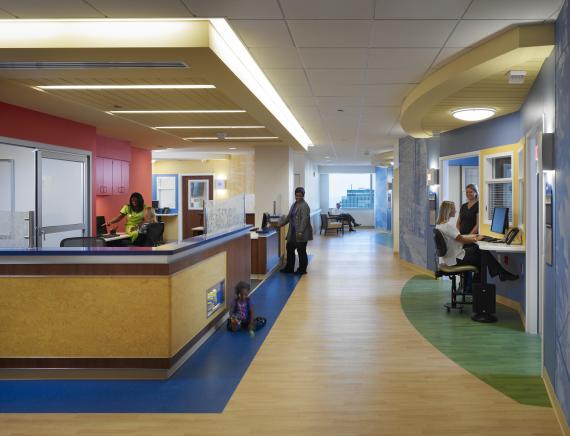Nine out of 10 healthcare providers say the Affordable Care Act (ACA) will be a “step forward” in addressing long-term health issues in the United States once it is fully established, and 83 percent say it is good for Americans, according to a survey of more than 190 healthcare leaders by Mortenson Construction.
The providers did not make an unqualified endorsement of the ACA, however. A full 86 percent say the ACA needs major changes or revisions.
Providers are excited about opportunities to improve while worried about the transition under way. Nearly four out of five, or 79 percent, say health reform is creating significant uncertainty for their organizations and the healthcare industry.
Tellingly, 74 percent predict it will challenge their organization’s financial condition with 72 percent saying it already has.
Other insights:
• Overall optimism about the future of U.S. healthcare among healthcare providers dropped from 85 percent optimistic in 2012 to 60 percent optimistic in 2013
• Four out of five say the ACA will successfully shift reimbursements to pay for the quality of outcomes
• 71 percent say it will improve quality and outcomes, and 65 percent say it will lower the cost of care
• 95 percent of healthcare providers believe specialized facilities, such as MRI centers, cancer centers and urgent care centers will grow in prominence in the next three years
“The healthcare market is in the process of adapting to a new normal,” said Bob Nartonis, Senior Vice President and National Healthcare Market Leader at Mortenson. “Many institutions are rethinking their basic assumptions regarding how they should operate going forward, understanding that there are new rewards for those who can successfully adapt and unwanted consequences for those who cannot.”
To understand the impact of the Affordable Care Act on healthcare providers and their facilities, Mortenson spoke to healthcare professionals at the Healthcare Design Conference in November to better understand these issues and the impact on design and construction trends. More than 190 professionals provided feedback, including healthcare administrators and facilities leaders, architects, and academics.
The new models for healthcare delivery and payment are requiring new approaches to healthcare facilities. With the pressing need to become more efficient and cut costs, they are emphasizing more flexibility in facility design and layouts that make it easier for patients to find their way around and for multi-disciplinary teams to work together. They also are relying more heavily on innovative technologies and project delivery methods to streamline construction to improve success.
Mortenson is one of the leading healthcare contractors in the U.S. and has completed more than 18.5 million square feet of healthcare construction and renovations nationwide in the past 10 years.
Download a free copy of the 2014 Mortenson Construction Healthcare Industry Study.
Related Stories
| May 18, 2011
Carnegie Hall vaults into the 21st century with a $200 million renovation
Historic Carnegie Hall in New York City is in the midst of a major $200 million renovation that will bring the building up to contemporary standards, increase educational and backstage space, and target LEED Silver.
| May 17, 2011
Redesigning, redefining the grocery shopping experience
The traditional 40,000- to 60,000-sf grocery store is disappearing and much of the change is happening in the city. Urban infill sites and mixed-use projects offer grocers a rare opportunity to repackage themselves into smaller, more efficient, and more convenient retail outlets. And the AEC community will have a hand in developing how these facilities will look and operate.
| May 17, 2011
Architecture billings index fell in April, hurt by tight financing for projects
The architecture billings index, a leading indicator of U.S. construction activity, fell in April, hurt by tight financing for projects. The architecture billings index fell 2.9 points last month to 47.6, a level that indicates declining demand for architecture services, according to the American Institute of Architects.
| May 17, 2011
Sustainability tops the syllabus at net-zero energy school in Texas
Texas-based firm Corgan designed the 152,200-sf Lady Bird Johnson Middle School in Irving, Texas, with the goal of creating the largest net-zero educational facility in the nation, and the first in the state. The facility is expected to use 50% less energy than a standard school.
| May 17, 2011
Gilbane partners with Steel Orca on ultra-green data center
Gilbane, along with Crabtree, Rohrbaugh & Associates, has been selected to partner with Steel Orca to design and build a 300,000-sf data center in Bucks County, Pa., that will be powered entirely through renewable energy sources--gas, solar, fuel cells, wind and geo-thermal. Completion is scheduled for 2013.
| May 17, 2011
Should Washington, D.C., allow taller buildings?
Suggestions are being made that Washington revise its restrictions on building heights. Architect Roger Lewis, who raised the topic in the Washington Post a few weeks ago, argues for a modest relaxation of the height limits, and thinks that concerns about ruining the city’s aesthetics are unfounded.
| May 17, 2011
The New Orleans master plan
At an afternoon panel during last week's AIA National Conference in New Orleans, Goody Clancy Principal David Dixon and Manning Principal W. Raymond Manning shared their experiences creating the New Orleans Master Plan, a document that sets a new course for the city, from land use and transportation planning to environmental protection.
| May 17, 2011
Do these buildings look like buffalo to you?
It’s hard to contemplate winter now that we’re mid-spring, but when the seasons change, ice skaters in Winnipeg will be able to keep warm in plywood shelters designed by Patkau Architects. The designers created temporary shelters inspired by animal behavior—specifically, buffalo bracing against the wind. Check them out.
| May 16, 2011
USGBC and AIA unveil report for greening K-12 schools
The U.S. Green Building Council and the American Institute of Architects unveiled "Local Leaders in Sustainability: A Special Report from Sundance," which outlines a five-point national action plan that mayors and local leaders can use as a framework to develop and implement green schools initiatives.












